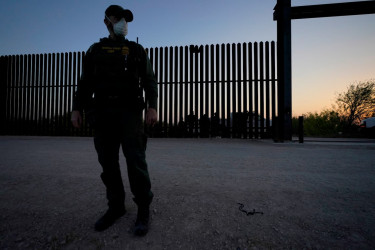Adam Goodman’s new book was in the works well before Donald Trump made a grotesque spectacle of the mass detention, deportation, and exclusion of migrants. Yet it could not be timelier. The Deportation Machine provides new, crucial insights into the history of migrant expulsion and the origins of today’s crises.
Most scholarship on deportation focuses on the formal proceedings. Goodman, however, identifies three mechanisms of expulsion: formal deportation (now termed “removal” by DHS), voluntary departure (“return”), and so-called self-deportation. Goodman’s research centers on the latter two, emphasizing their coercive nature and centrality to U.S. immigration enforcement historically. As he notes, “more than 90 percent of all expulsions throughout U.S. history have been via an administrative process euphemistically referred to as ‘voluntary departure.’” Self-deportation, in turn, is impossible to quantify, but Goodman emphasizes its role in achieving what official policy would not.
By focusing on voluntary departure and self-deportation, Goodman expands our understanding of deportation to include these important and overlooked mechanisms of expulsion, which historically have proven far more significant means of removing people from the country than formal deportation itself.
While he is attentive to political-economic context, Goodman doesn’t engage with contemporary theories of the political economy of migration that analyze the uses, methods, and goals of deportation. Expanding this conceptual framework, I think, helps explain the transformations charted in Goodman’s book beyond their internal institutional logics.
Origins of Immigration Policy
Goodman traces the institutionalization of U.S. immigration bureaucracy to the turn of the 20th century, spurred by anti-Chinese nativism and the Chinese Exclusion Act of 1882. The author highlights early instances of “self-deportation” campaigns waged by white civilians to drive out Chinese migrants, often in the name of “white labor.” These actions included mob violence and lynchings, but also a nominally peaceful strategy of boycotts and “incendiary scare tactics, pervasive psychological violence, [and] the strategic use of the newspapers.”
Formal, federal deportation arose as a result of the anti-Chinese campaign, with an 1888 ban on return of departed Chinese migrants to the U.S.: Chae Chan Ping, famously, became victim to the first formal federal deportation after attempting to return to the U.S. where he had resided for 12 years. Subsequent legislation in the 1890s expanded the discretionary authority of U.S. immigration officials and sought to define and broaden the categories of undesirable migrants for exclusion and deportation, including those “likely to become a public charge”—a notion heavy with misogynist, homophobic, and racist presumptions—and political radicals.











